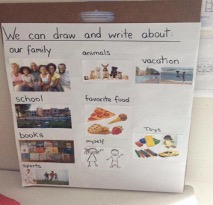- A journal is a place for children to express themselves through drawing and mark making. The adult’s job is to support and scaffold, based on each child’s need.
- A journal can be a small teacher-made booklet with a few blank pages stapled together, a blank composition book, or a small spiral notebook.
- A journal is a place where children can write stories about themselves, things that happened in their lives, their families, experiences, etc.
- Some children will also want to write stories about fictional events.
- Labeling and dictation are at the heart of young children’s early journaling experiences.
- Initially the child may begin with a drawing and teachers can label the drawing with a few words.
- Eventually children will tell longer stories and may need gentle scaffolding to expand their narratives.
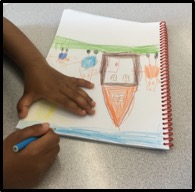
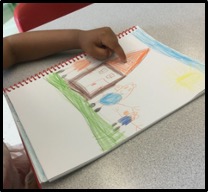
Developmental Stages of Drawing
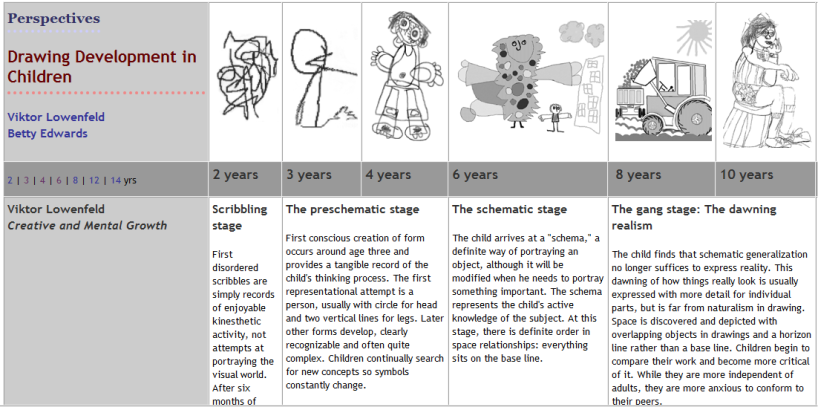
Developmental Stages of Writing
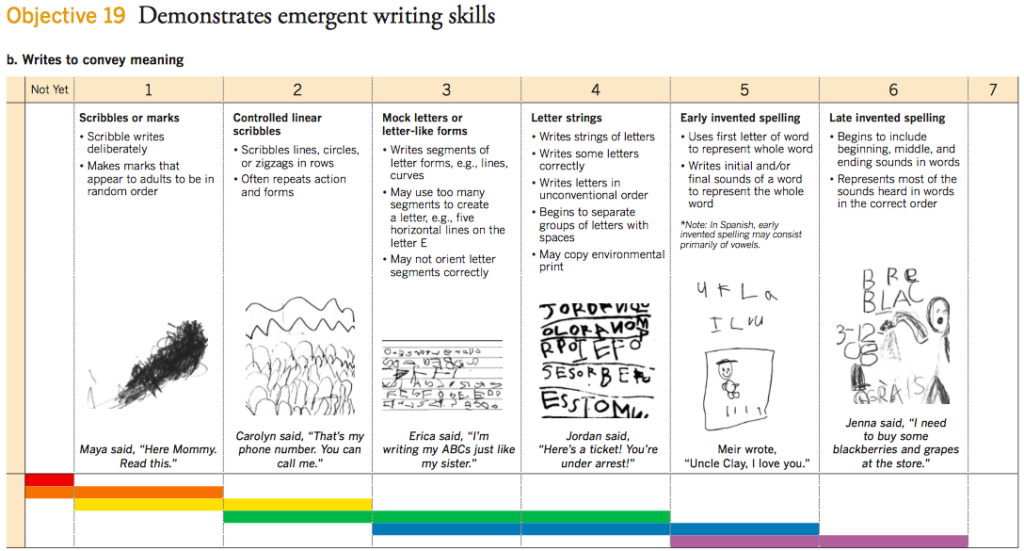
Establishing the Journaling Environment
- Think about when you might do journaling, such as in a small group during morning choice or rest time.
- Create a place in the classroom to keep all of the journaling materials, such as a basket or a shelf in the writing area. This place should be accessible to children and have:
- A journal for each child
- Short writing pencils, colored pencils and crayons
- A date stamp and ink pad
- A basket of familiar pictures/words to give children inspiration and words to copy (mom, dad, cat, etc.)
- Develop systems for tracking who has had a turn and who needs a turn, each week. Some teachers:
- Use a “To Do” basket and a “Completed” basket
- Create a weekly checklist
- Divide children into Journaling Groups, for each days of the week
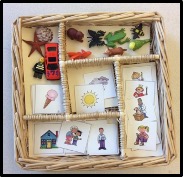
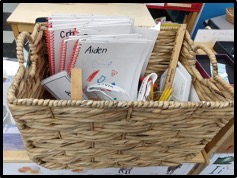
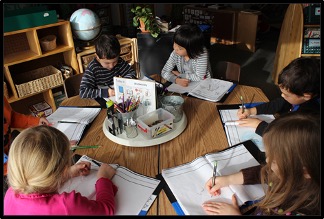
Ways to Inspire Journaling
In whole or small group lessons, teachers could:
- Model journaling using a shared group experience.
- Generate journaling topics (Morning Meeting discussion is a good time for this).
- Create anchor charts of topics for journaling. Some may be:
- Favorite Things
- Family
- School
- Food
- The Playground
- Animals
- Home
- Current Theme Topic
